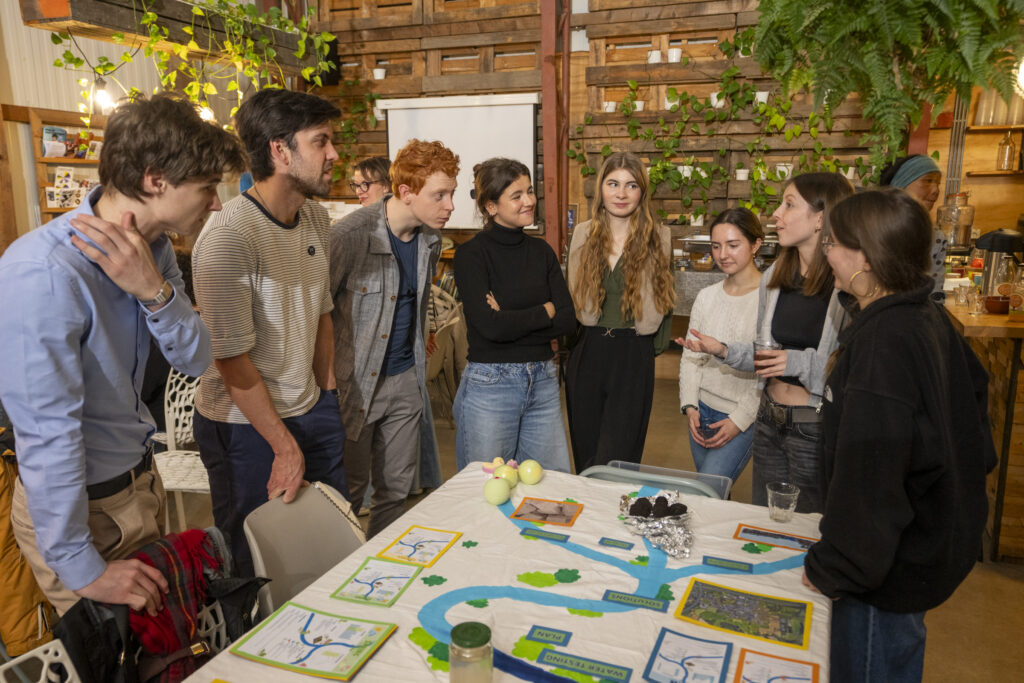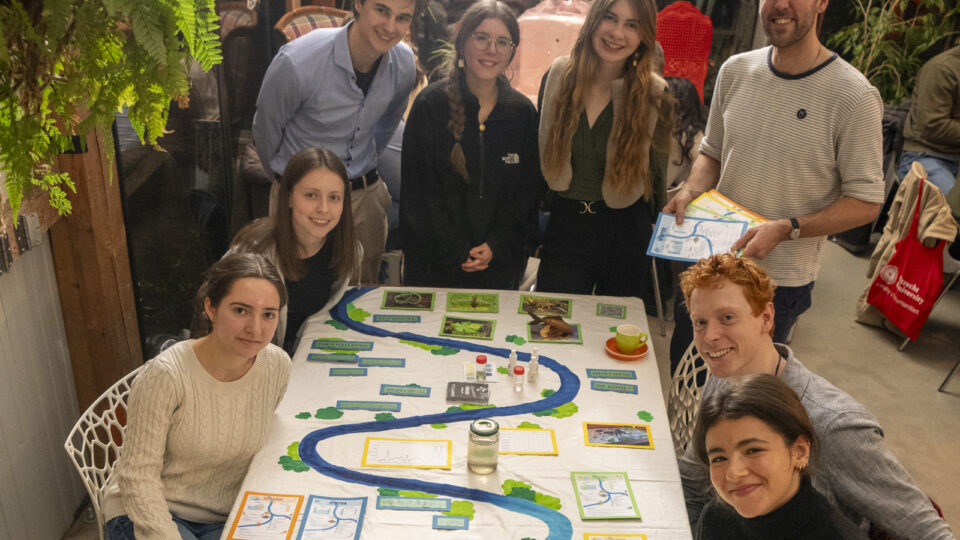As the Green Light Team, we have been given a challenge by the Green Office Utrecht, to increase the biodiversity in the area of Utrecht Science Park. The Green Office has identified a list of key species of plants and animals endogenous to the area of USP that they are trying to increase the populations of by providing a more suitable environment for them. In our challenge we focused on five of the water-inhabiting species: Grass snake (Natrix natrix), Scarce chaser (Libellula fulva), Shining pondweed (Potamogeton lucens), Northern crested newt (Triturus cristatus), European weatherfish (Misgurnus fossilis).
Although our initial challenge was to improve general living conditions for the five key species to enable them to return to USP, we decided that some stricter defining was needed. After multiple interviews with people responsible for biodiversity policies at UU, we realised that some, mostly high-cost, large-scale projects are already being planned. For instance, specially designed ponds are in development to ensure easy access to water for some of the targeted species. The UU Green Office is also envisioning to connect the areas outside USP, where the species have been observed, such as Oostbroek and Rhijnauwen. Our focus therefore shifted towards more small-scale improvements in the area of UU Science Park. But the main point of our project has become another vital living condition common to all targeted species: water quality.
The UU Green Office agrees that research on the topic of water quality in UU Science Park is the corner stone for any further improvements in the environment for the five key species. Due to its indisputable importance, our redefined challenge has thus taken the form of attempting to examine the water quality in USP and fins the ways of improving it in order to enable the targeted species to return to USP.
Apart from that, we have also examined ways of canal restructuring, which might make them more accessible for the key species to inhabit them.
Despite many efforts, we haven’t gotten access to any database large enough to be reliable to make conclusions concerning the main sources of pollution of the water in USP. We thus tried to make some measurements on our own. We collected seven different samples from across USP and performed tests for pH, general hardness, carbonate hardness and amounts of ammonia, nitrate, nitrite and phosphorus. However, the results we obtained were surprising, indicating that the water quality is nearly excellent, which is in contradiction with what the UU Green Office as well as other data sources have been telling us. We thus realised that the tests we performed are not conclusive and further testing accounting for all possible influencing factors would need to be done. We therefore decided to focus our attention on designing an appropriate plan for testing the water. The plan defines three main aspects of the tests that should be performed: their locations, times and the specific pollutants, of which the presence should be tested for.
Apart from emphasizing the need for carrying out appropriate tests of the water quality, we also came up with two ways in which it might be improved, as well as an idea for making the canals in USP more accessible for the key species.
In case more information is needed, please visit our website: https://filipkoresurlep.wixsite.com/green-light-team/file-share/ba5c61f3-e393-4cc0-87f9-4ddcec33a030


